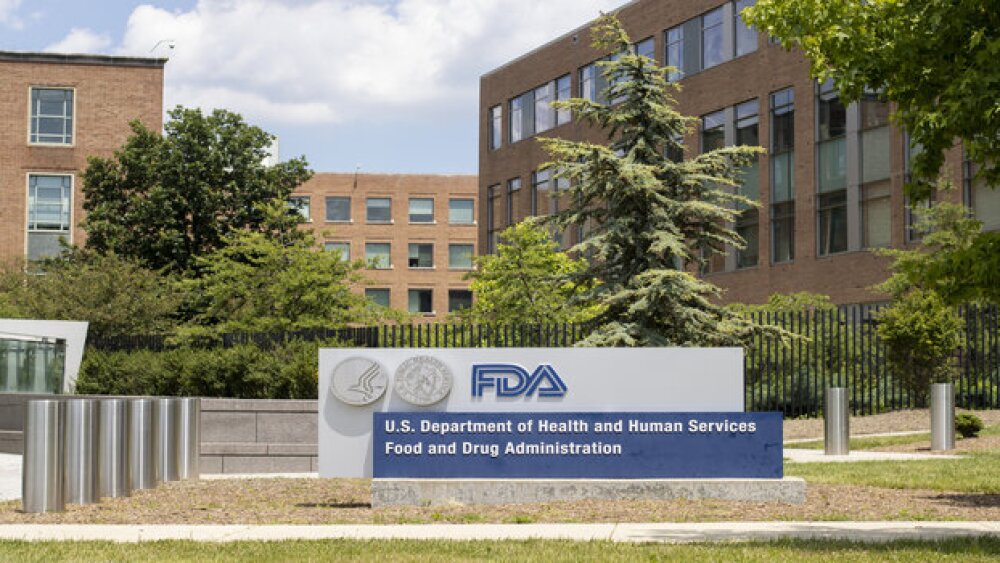BERKELEY, Calif., Jan. 18 /PRNewswire-FirstCall/ -- Dynavax Technologies Corporation (Nasdaq: DVAX - News) announced that results from a two-year Phase 2/3 clinical trial of TOLAMBA, a ragweed allergy immunotherapeutic, showed that patients treated with TOLAMBA experienced a statistically significant reduction in total nasal symptom scores (TNSS) compared to placebo-treated patients in the second year of the trial, the primary efficacy endpoint of the study (p=0.024). Results also showed significant clinical benefit relative to secondary endpoints, including composite hay fever symptoms and ocular effects, and a significant reduction in antihistamine use (p=0.01). These results were achieved after a single short course of therapy prior to the first ragweed season (2004), and demonstrated that a booster dose prior to the second season (2005) was not required to achieve clinical benefit. Unlike the TOLAMBA-treated group, the boosted group did not achieve statistical significance relative to the primary efficacy endpoint compared to placebo. The safety profile of TOLAMBA was favorable. Systemic side effects were indistinguishable from placebo and local injection site tenderness was minor and transient.
Based on these results Dynavax anticipates initiating a large-scale pivotal Phase 3 clinical trial of TOLAMBA in the first half of 2006 and pursuing discussions with the US Food & Drug Administration (FDA) concerning the potential registration strategy for TOLAMBA. Dynavax intends to present the detailed clinical results of the Phase 2/3 trial at the upcoming meeting of the American Association of Allergy, Asthma and Immunology (AAAAI), March 3-7, in Miami, Florida. Dr. William W. Busse, MD, Professor of Medicine, University of Wisconsin-Madison, Clinical Science Center, and principal investigator for the study, will make the presentation at AAAAI. A separate company announcement will provide details of that presentation.
"We believe that the positive outcome in this allergy trial represents a major success for Dynavax and its shareholders and expands our leadership in the TLR-9 agonist space. This achievement provides important validation of our ISS technology's potential to modify disease through immune system reprogramming and complements the positive results shown to date with HEPLISAV(TM), our hepatitis B vaccine," said Dino Dina, MD, president and chief executive officer.
Continued Dr. Dina: "We are fully committed to the development of TOLAMBA and believe this product could represent the cornerstone of our strategy to establish a valuable allergy franchise. We are preparing to initiate our pivotal Phase 3 trial within the next few months and will look forward to upcoming discussions with the FDA concerning key parameters in this study and our regulatory strategy. In addition, our ongoing clinical trial in ragweed allergic children is progressing well and should yield primary endpoint results following the 2006 ragweed season. We sincerely appreciate the support and enthusiasm of our many clinical investigators in the Phase 2/3 trial, and will look forward to building on these relationships as we implement our pivotal Phase 3 trial."
TOLAMBA represents the foundation of a comprehensive allergy franchise for Dynavax, and has the potential to be a novel entrant in the multibillion-dollar global allergy market. In the US alone, approximately 40 million people suffer from allergic rhinitis. Ragweed is the single most common seasonal allergen, affecting up to 75% of those with allergic rhinitis, or 30 million Americans. Current therapeutic options are mainly limited to symptomatic therapies and conventional allergy immunotherapy, which generally requires 60-90 shots over three to five years and represents a significant treatment burden for allergy sufferers. TOLAMBA has the potential to offer a safe, efficacious and convenient alternative for patients suffering from ragweed allergy.
"The results of the Phase 2/3 clinical trial are encouraging, clearly demonstrating that TOLAMBA has a meaningful clinical benefit in reducing the symptoms of ragweed allergy and has an attractive safety profile," said Dr. Busse. "TOLAMBA could represent an entirely novel approach to allergy immunotherapy and has the potential to offer allergy sufferers with severe as well as moderate or mild disease an effective, convenient and safe alternative to conventional treatment."
Phase 2/3 Trial Design
The Phase 2/3 TOLAMBA clinical trial, initiated in early 2004, was a two-year, randomized, double-blind, placebo-controlled study conducted at 29 sites in the midwestern, southwestern and eastern US. The trial involved 462 subjects, aged 18 to 55 years, with moderate to severe ragweed allergy (hay fever). Prior to the 2004 ragweed season, which generally lasts from August through October, subjects received six weekly doses of either placebo or escalating doses of up to 30 micrograms of TOLAMBA, in a two-to-one randomization, TOLAMBA to placebo group. Prior to the 2005 ragweed season, one half of the TOLAMBA-treated subjects received two additional booster shots. The other half of the TOLAMBA-treated group received placebo injections and the original placebo-treated group received placebo injections. The trial protocol permitted subjects to self-administer pseudoephedrine hydrochloride (Sudafed®, Pfizer, Inc.) and fexofenadine hydrochloride (Allegra®, sanofi-aventis), as needed.
The primary objective of the trial was to assess the treatment difference in a subject-rated 24-hour total nasal symptom score. The primary efficacy endpoint was the change from baseline in TNSS during the peak period of the 2005 ragweed season of the TOLAMBA-treated groups compared to the placebo group. TNSS includes nasal symptoms (congestion, sneezing, itching and runny nose) rated on a four-point scale. Patients recorded their symptoms electronically on a daily basis. Results were analyzed comparing the TOLAMBA-to-TOLAMBA and TOLAMBA-to-placebo groups to the placebo-to-placebo treatment group over the two-week peak period of the 2005 ragweed season. Secondary objectives included the change in hay fever symptoms (visual analog score or VAS, recorded electronically on a weekly basis), eye symptoms, aggregate hay fever scores, quality of life, medication use, the change in serum IgG and IgE antibody response to Amb a 1, and safety.
About ISS Technology and TOLAMBA
Immunostimulatory sequences (ISS) are short synthetic DNA molecules that stimulate a Th1 immune response while suppressing Th2 immune responses. ISS contain specialized sequences that activate the innate immune system. ISS are recognized by a specialized subset of dendritic cells containing a unique receptor called Toll-Like Receptor 9, or TLR-9. The interaction of TLR-9 with ISS triggers the biological events that lead to the suppression of the Th2 immune response and the enhancement of the Th1 immune response.
TOLAMBA consists of Dynavax's proprietary ISS molecule linked to the purified major allergen of ragweed, called Amb a 1. TOLAMBA is designed to target the underlying cause of seasonal allergic rhinitis caused by ragweed. The conjugation of ISS to Amb a 1 ensures that both ISS and ragweed allergen are presented simultaneously to the same immune cells, producing a highly specific and potent inhibitory effect and suppressing the Th2 cells responsible for inflammation associated with ragweed allergy.
Dynavax was founded in August 1996 by Dr. Dennis A. Carson, Dr. Eyal Raz, and Dr. Lawrence M. Lichtenstein, based on work done at the University of California at San Diego. Dr. Raz and Dr. Carson co-invented the conjugation technology linking ISS to allergens and other antigens that is a key aspect of TOLAMBA's mechanism of action.
Conference Call Today
Dynavax will hold a conference call to discuss results of the Phase 2/3 TOLAMBA clinical trial today at 4:30 pm Eastern /1:30 pm Pacific. To access the live call, please dial 1-800-261-3417 (US) or 617-614-3673 (international), passcode 72968081. Interested parties may listen to the webcast live at http://www.dynavax.com by clicking on the "Events" tab under the heading, "Investors." The webcast is also being distributed over CCBN's Investor Distribution Network to both institutional and individual investors. Individual investors can listen to the call through CCBN's individual investor center at http://www.fulldisclosure.com or by visiting any of the investor sites in CCBN's Individual Investor Network. Institutional investors can access the call via CCBN's password-protected event management site, StreetEvents, at http://www.streetevents.com . A telephonic replay will be available through January 25, 2006 by dialing 888-286-8010, access code 75508762. International callers can dial 617-801-6888, access code 75508762.
About Dynavax
Dynavax Technologies Corporation discovers, develops, and intends to commercialize innovative products to treat and prevent allergies, infectious diseases, and chronic inflammatory diseases using versatile, proprietary approaches that alter immune system responses in highly specific ways. Our clinical development programs are based on immunostimulatory sequences, or ISS, which are short DNA sequences that enhance the ability of the immune system to fight disease and control chronic inflammation. Dynavax's pipeline includes: TOLAMBA, a ragweed allergy immunotherapeutic anticipated to enter a Phase 3 pivotal trial and currently in a supportive clinical trial in ragweed-allergic children; HEPLISAV, a hepatitis B vaccine that is currently in a pivotal Phase 3 clinical trial; a cancer therapy currently in a Phase 2 clinical trial; and an asthma immunotherapeutic that has shown preliminary safety and pharmacology in a Phase 2a clinical trial.
Dynavax cautions you that statements included in this press release that are not a description of historical facts are forward-looking statements, including without limitation all statements related to the therapeutic and commercial potential of TOLAMBA for ragweed allergy, plans to initiate a pivotal Phase 3 program for TOLAMBA in 2006, that TOLAMBA could represent the cornerstone of the company's strategy to establish a valuable allergy franchise, the outcome of discussions with the FDA concerning a regulatory strategy for TOLAMBA, the progress of TOLAMBA in an ongoing clinical trial in ragweed allergic children, the potential for TOLAMBA to be a novel in the multibillion dollar global allergy market, and the potential for TOLAMBA to become a safe, efficacious and convenient alternative for patients suffering from ragweed allergy. Words such as "believes," "anticipates," "plans," "expects," "intend," "will," "slated," "goal" and similar expressions are intended to identify forward-looking statements. The inclusion of forward-looking statements should not be regarded as a representation by Dynavax that any of its plans will be achieved. Actual results may differ materially from those set forth in this release due to the risks and uncertainties inherent in Dynavax's business including, without limitation, risks relating to: plans and timing of initiating a pivotal Phase 3 clinical trial for TOLAMBA in ragweed allergy; the progress and timing of its clinical trials in other indications including hepatitis B, cancer and asthma; difficulties or delays in developing, testing, obtaining regulatory approval of, producing and marketing its products; the scope and validity of patent protection for its products; competition from other pharmaceutical or biotechnology companies; its ability to obtain additional financing to support its operations; its ability to maintain effective financial planning and internal controls; and other risks detailed in the "Risk Factors" section of Dynavax's Annual Report on Form 10-K filed on March 18, 2005, Dynavax's quarterly report on Form 10-Q filed on November 14, and Dynavax's Prospectus Supplement filed on October 11, 2005. You are cautioned not to place undue reliance on these forward-looking statements, which speak only as of the date hereof. All forward-looking statements are qualified in their entirety by this cautionary statement and Dynavax undertakes no obligation to revise or update this news release to reflect events or circumstances after the date hereof.
Source: Dynavax Technologies Corporation




